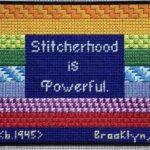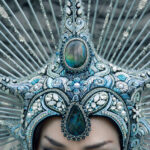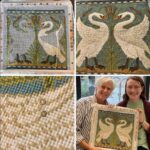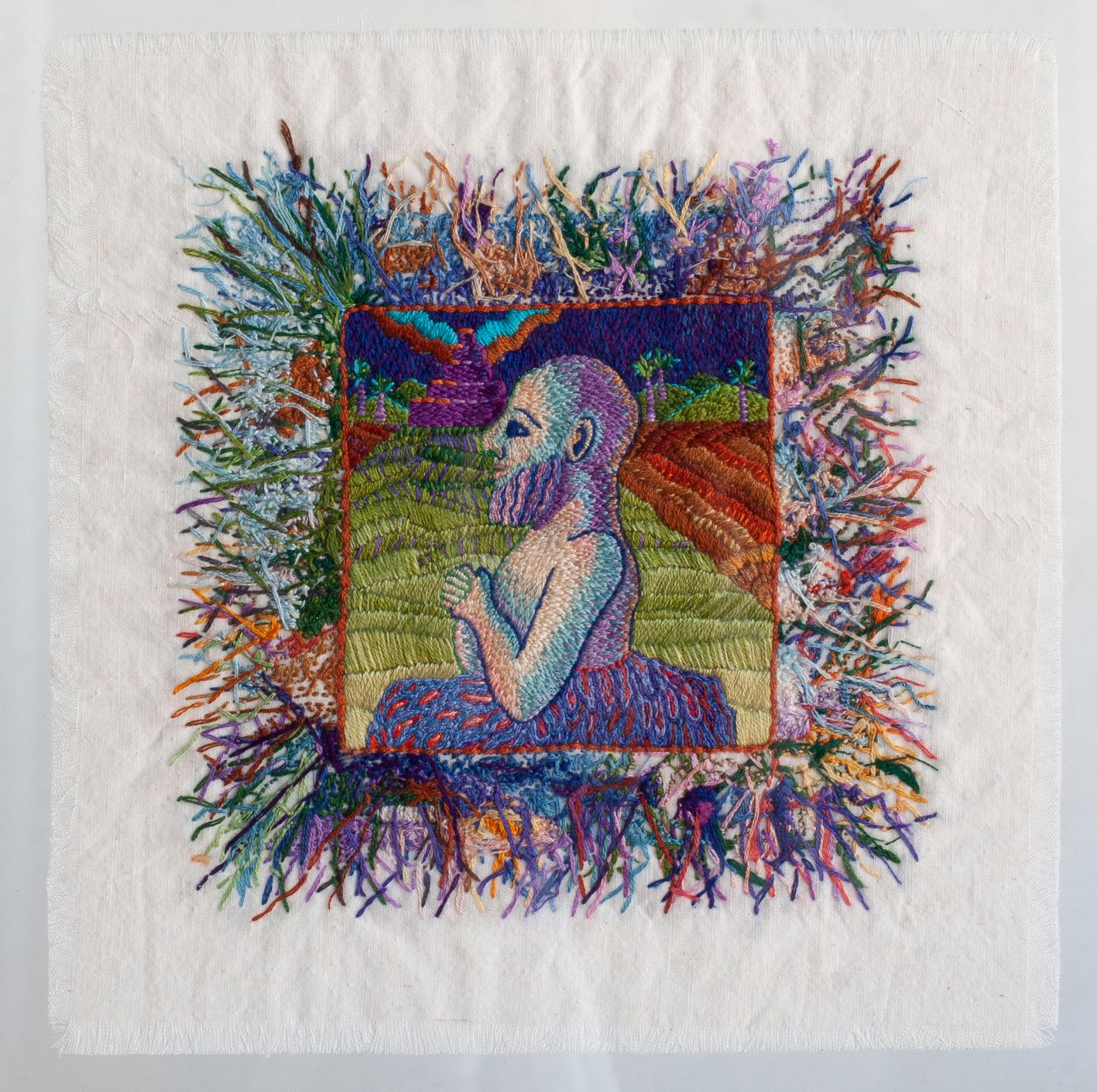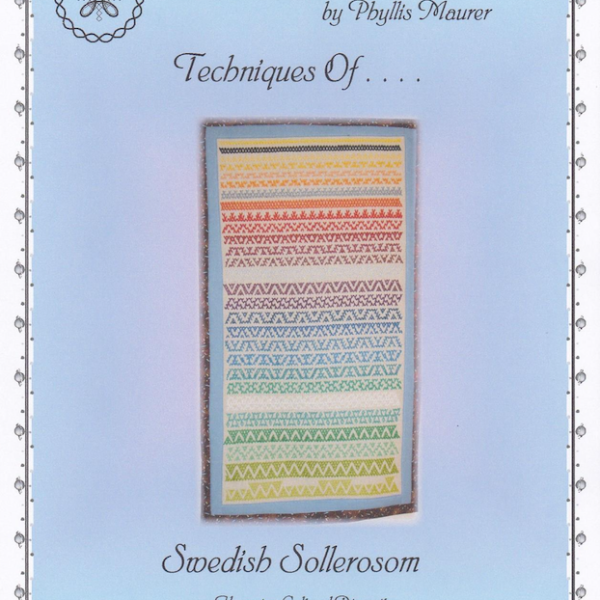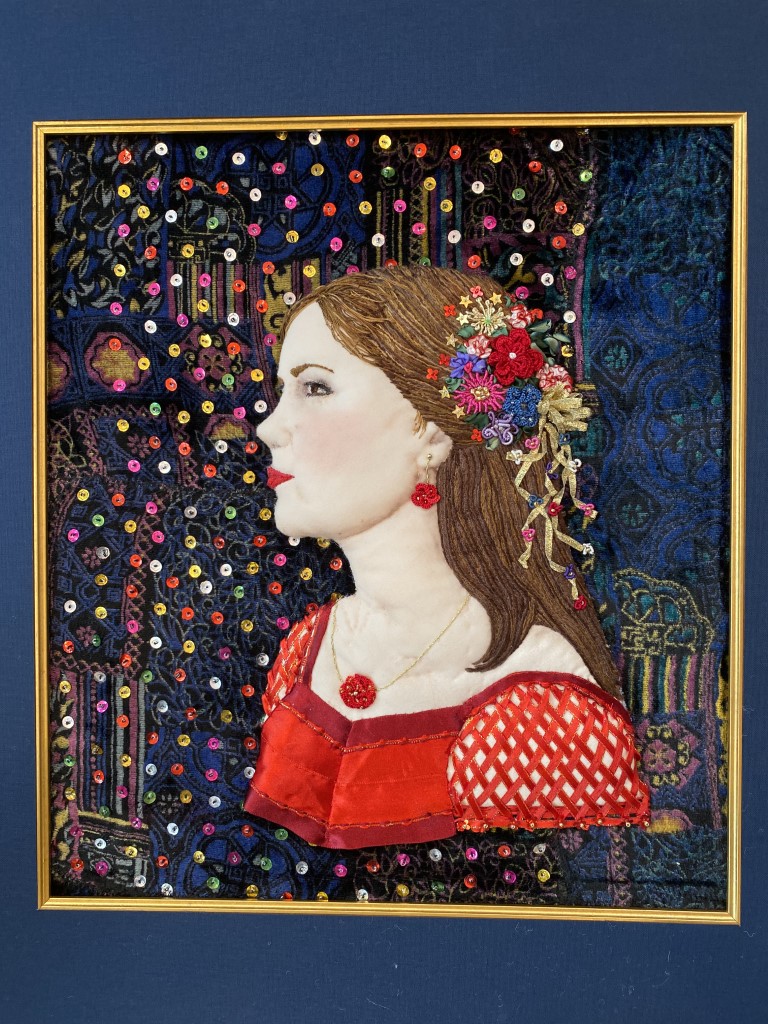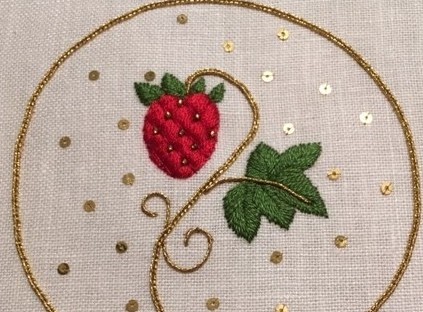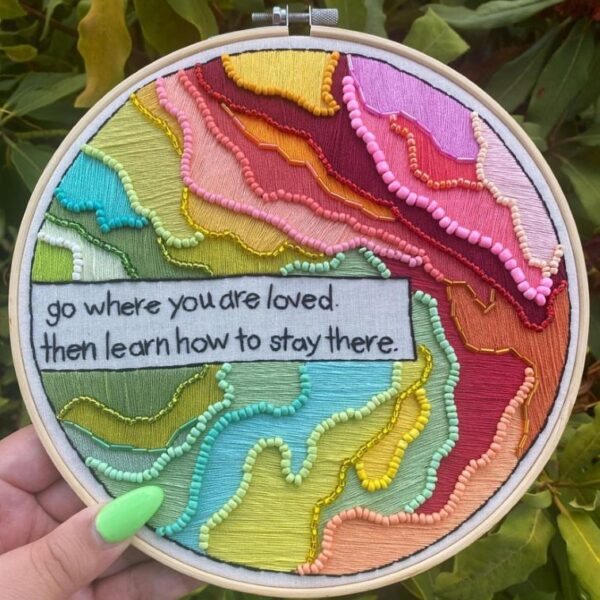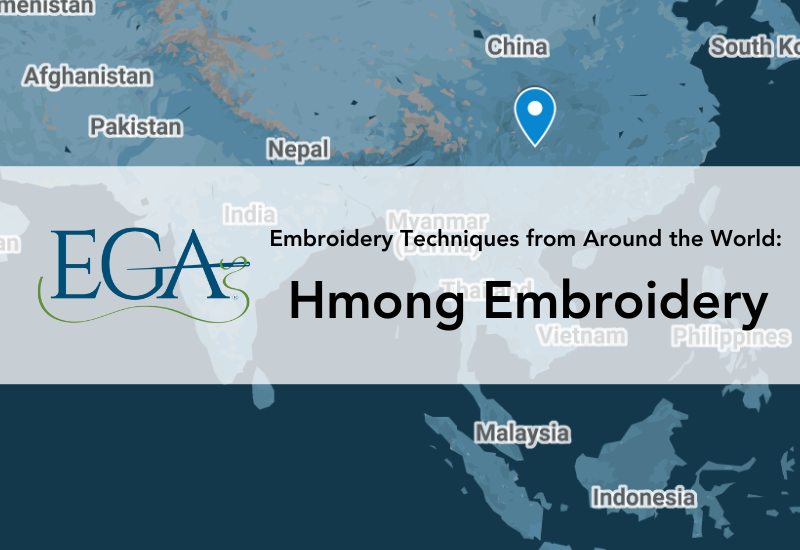
Technique: Hmong Embroidery
Place of Origin: Southern China
Earliest known date: unknown
History: A nomadic people with a history of persecution in China, the Hmong people used embroidery as a means of preserving and passing down their stories. Hmong women would stitch Hmong embroidery, referred to as “paj ntaub” in the Hmong language (or “flower cloth”) into clothing, ceremonial cloths, and other textiles.
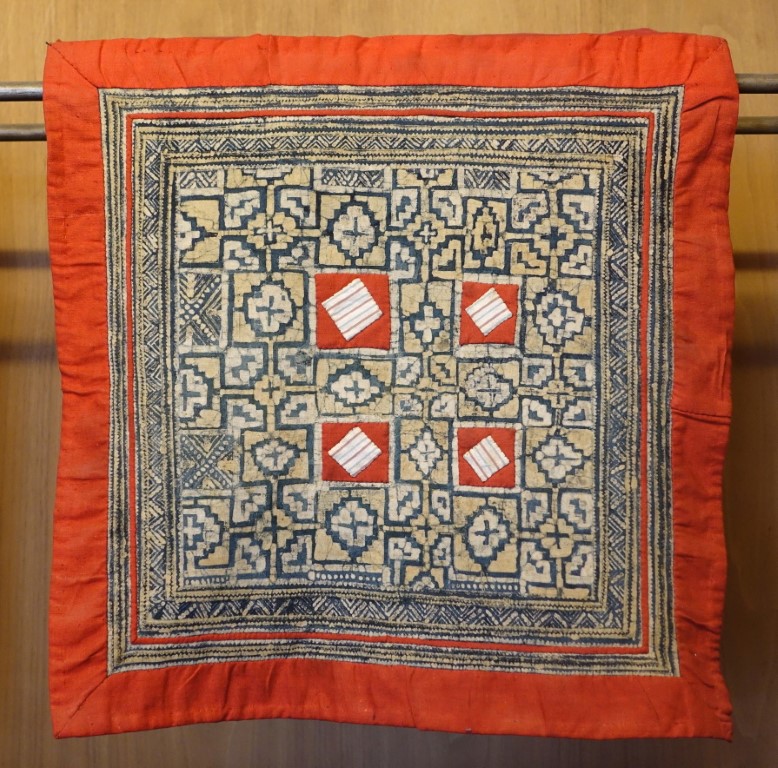
The Hmong people have roots in southwestern China that reach back over 8,000 years. However, persecution and repression during the Qing Dynasty forced the Hmong south, with many Hmong settling in areas of Southeast Asia like Thailand, Myanmar, Vietnam and Laos. Hmong oral history states that when the Hmong were situated in China, they were forbidden to use their written language.
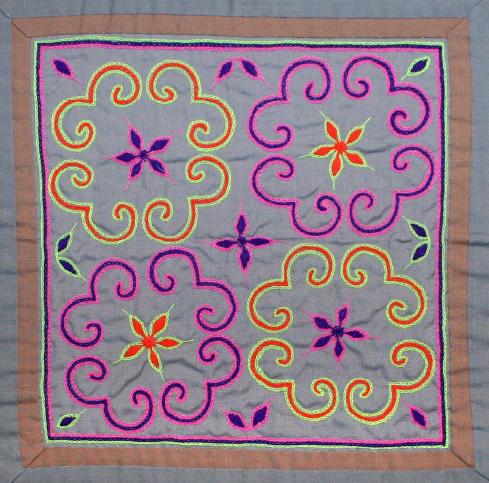
To preserve their stories and cultural heritage, they developed paj ntaub, devising symbols and pictographs to represent their language, and stitching those motifs into their clothing and textiles. In paj ntaub, they would tell the stories of their daily lives, their identity and history, and their traditions and cultural beliefs. The creation of paj ntaub was an act of resistance and preservation. As they were often incorporated into clothing, paj ntaub served as a wearable language.
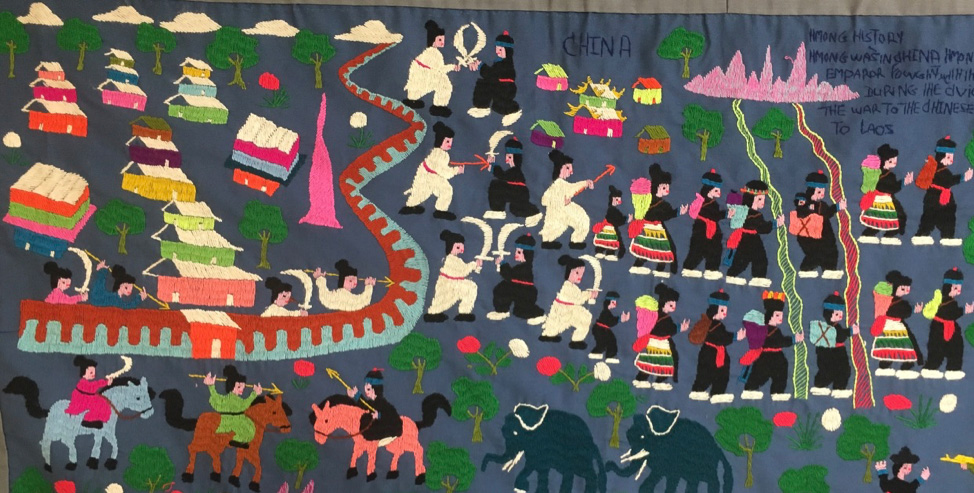
During the Vietnam War, the Hmong people sided with the United States and once again faced persecution in their homeland. Many migrated to the United States and continued to stitch paj ntaub, but in the new form of story cloths. These story cloths served to record their experiences in refugee camps and emigrating to a new land. Stitching and selling paj ntaub story cloths preserved their stories and gave Hmong immigrants a source of income.
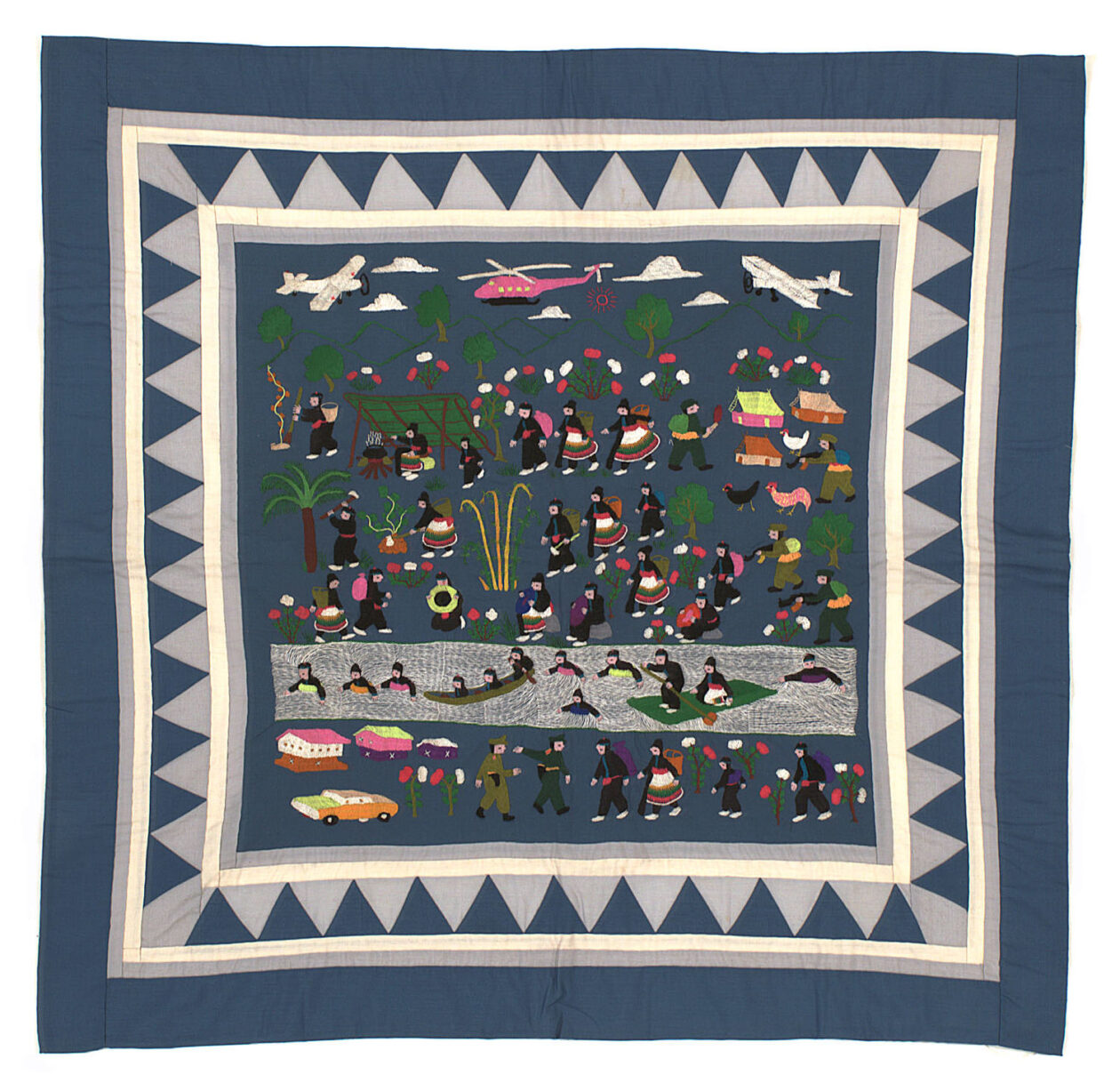
The Hmong people are now spread throughout China, Southeast Asia, and the United States, and paj ntaub continues to be passed down in the same way it has been for centuries. Mothers teach their daughters the techniques used in creating paj ntaub and the symbolism of different motifs. Proficiency in crafting paj ntaub is considered a reflection of a woman’s fertility, creativity, industriousness, and desirability as a wife and mother. When marrying into a family, a Hmong woman will learn the embroidery motifs and techniques of her new family to continue preserving their cultural heritage.
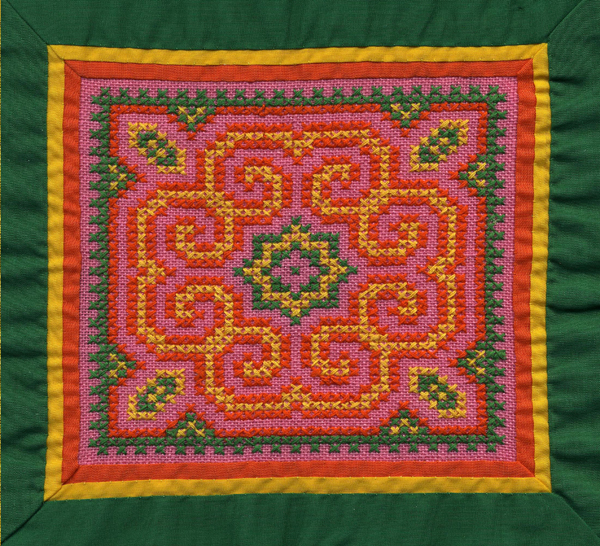
Materials, Techniques, and Stitches: Hmong embroidery encompasses a variety of techniques and embroidery stitches. A paj ntaub can feature applique, reverse applique, batik dyed cloth (usually hemp or cotton), cross stitch, and surface embroidery stitches like running stitch, chain stitch, and satin stitch.
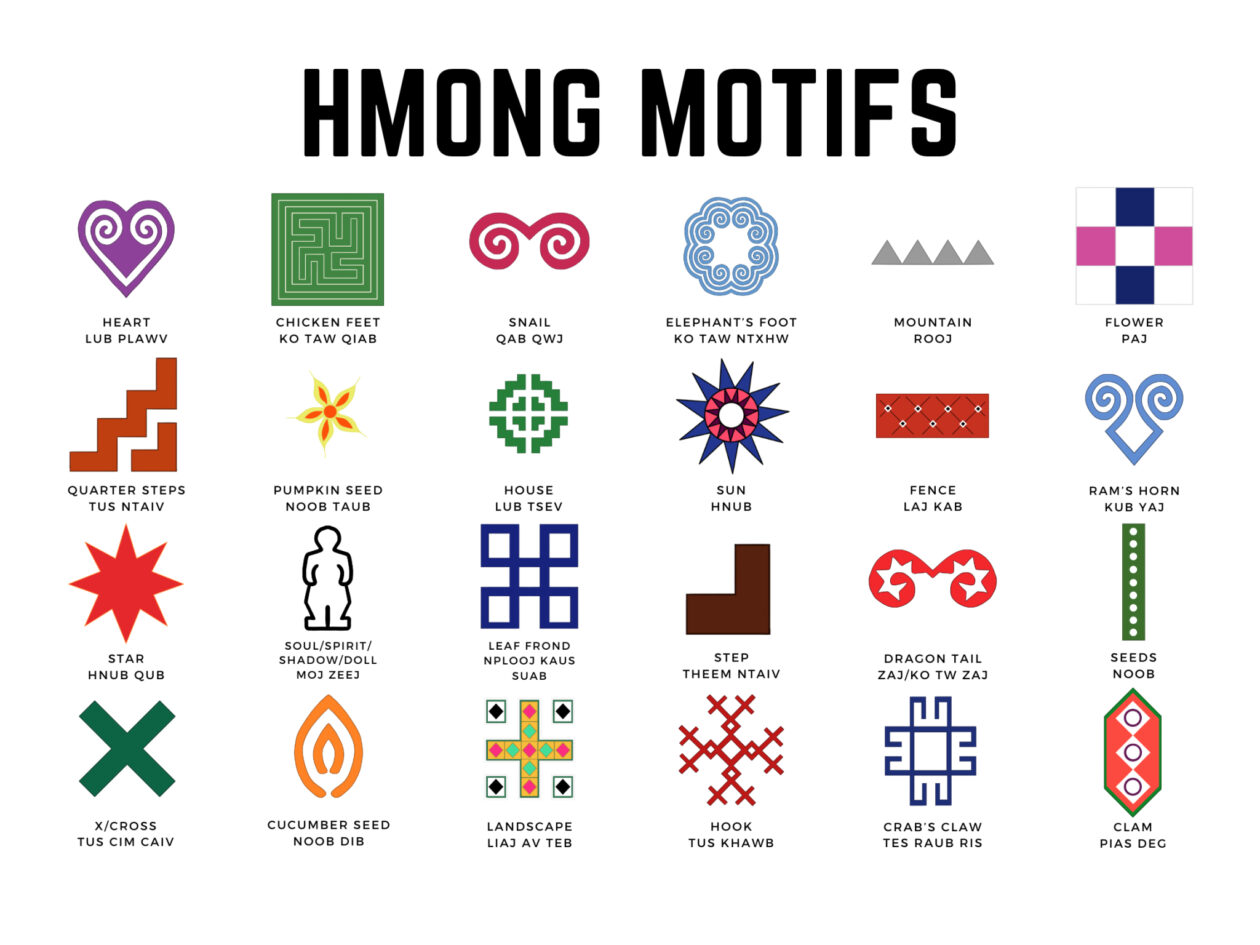
Motifs: Motifs for Hmong embroidery can vary by tribe and region. Traditional paj ntaub often features geometric patterns, with more modern paj ntaub focusing on pictographs that serve as visual stories. Flora and fauna are prominent features in Hmong embroidery, with different animals and plants representing the values, spirituality, and other aspects of Hmong culture. For example, the “Elephant’s Foot” (shown above) has been used as a symbol for family. Leaf designs have been used to represent life, spirals signify longevity, rice represents prosperity, and triangles (mountains) represent stability. Hmong embroidery is very colorful, and each color also carries special meaning: white for purity, green for harmony with nature, and black for fortitude.
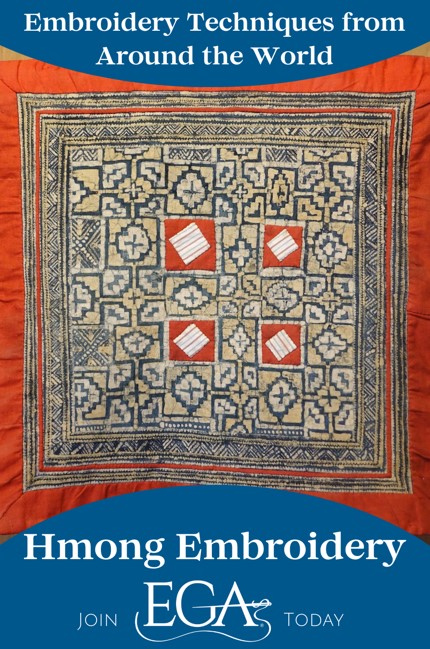
Sources
Hmong Textile Art. In Wikipedia. https://en.wikipedia.org/wiki/Hmong_textile_art
Duddeck, M. C. (n.d.). Paj Ntaub: The History of Hmong Embroidery. Learn Uake. https://learnuake.org/articles/hmong-culture/embroidery/
Shah, A. (2012, December 4). Hmong embroidery is the thread that binds. StarTribune. https://www.hmongcc.org/uploads/4/5/8/7/4587788/startribune12.5.2012.pdf
(n.d.). The fabric of memory: Story cloth as art and history for Hmong in USA. Garland Magazine. https://garlandmag.com/article/hmong-in-usa/
(n.d.). Hmong Embroidery. Hmong Embroidery. https://hmongembroidery.org/index.html
McShannock, L. (n.d.). Flowery Cloth The Art and Artistry of Hmong Paj Ntaub. Minnesota History. http://www.mnhs.org/market/mhspress/minnesotahistory/index.html
McShannock, L. (n.d.). What Hmong Textiles Really mean: Symbols of Family, Culture and Resilience. Lumily. https://shoplumily.com/blogs/the-good-karma-blog/hmong-textiles-symbols-meanings
McShannock, L. (n.d.). Hmong women sold their embroidery in refugee camps for $1 apiece. The culture they documented is beyond value. Sahan Journal. https://sahanjournal.com/arts/hmong-paj-ntaub-hmong-archives/
McShannock, L. (n.d.). The Rich Symbolism And Deep Meanings Of Hmong Symbols. Shun Spirit. https://shunspirit.com/article/hmong-symbols-and-meanings
Gooden, A. (n.d.). The Intricate Beauty of Hmong Paj Ntaub Flower and Related Patterns. Wayne Arthur Gallery. https://www.waynearthurgallery.com/hmong-paj-ntaub-flower/
